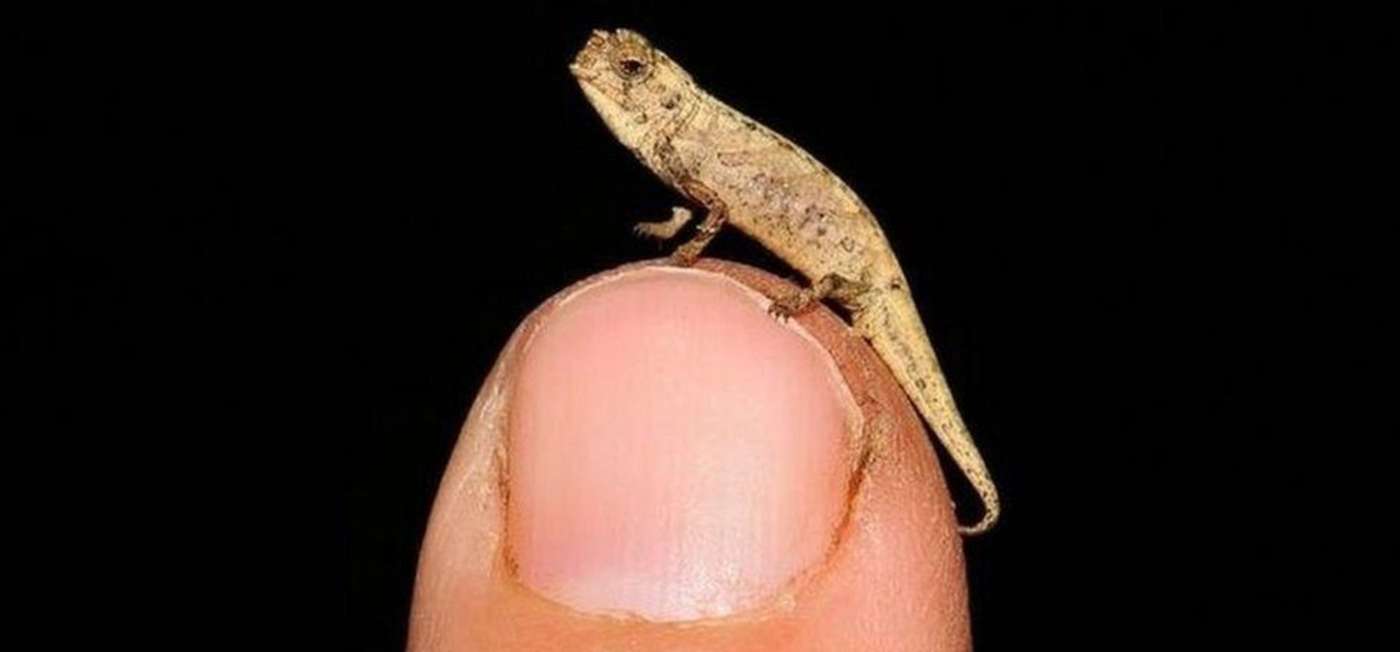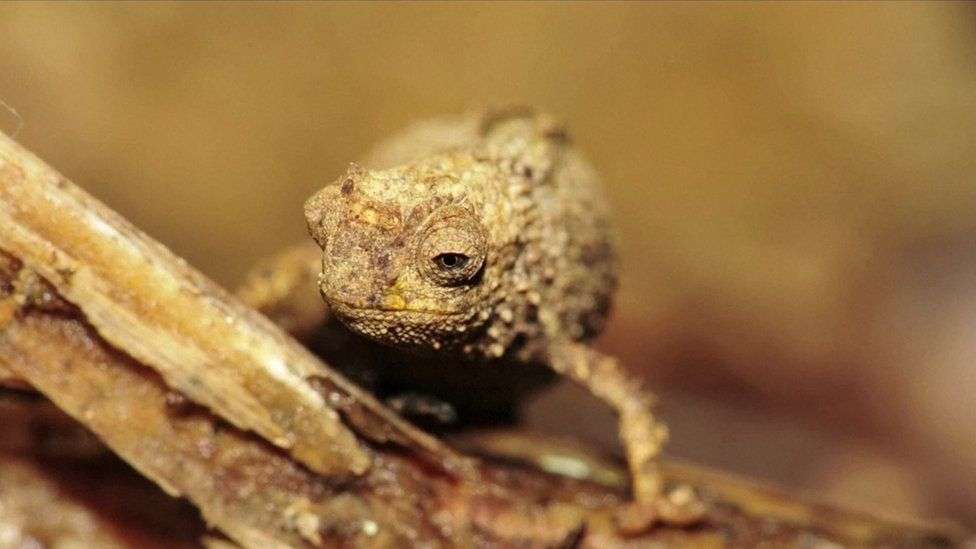30 Years After Big Eruption Put Volcano Mouse on the 'Extinct' List, Research Reveals it's 'Doing Great'
After the 1991 eruption of Mount Pinatubo on Luzo, the Philippines, scientists thought a tiny mouse that lived there would have gone extinct.

A chameleon has been declared by science as currently the world's smallest reptile.
The male brookesia nana or "nano-chameleon" measures less than an inch long, while the females stretch just past an inch.
Chameleons are famous for their extending, sniper-rifle tongues, their ability to change color, and their funny little karate-chop oven-mitt-like hands that allow them to cling to tree branches. Brookesia nana in contrast is more at home on the forest floor, and can't even change color.
"Extremely miniaturized animals are generally thought to face physiological challenges that limit further size reductions, yet, miniaturization has independently evolved many times," explain the research scientists Frank Glaw et al. in their paper describing the details of the tiny lizard.
"The repeated evolution of such an extreme phenotype suggests that [natural] selection can often favor its emergence but currently our understanding of miniaturization and the underlying evolutionary pressures is far from complete."

Examples of extreme miniaturization are fascinating for scientists to study, since the overwhelming majority of vertebrates grow in size as they grow older.
Compared to its body size, the male brookesia nana has the third largest reproductive organ of any of the dwarf chameleons, and the fifth largest of 52 examined chameleons of other species. This is thought to be an absolute necessity, the scientists explained, since if it were any smaller it perhaps wouldn't be able to reproduce at all.
At one mm long, the "hemipenis," an internally stored sex organ, is as big as the chameleon's head, which was actually the piece of the puzzle which confirmed beyond any doubt that it was indeed an adult male the scientists were looking at, and not a juvenile.
In the genus brookesia, there already was a "brookesia micra," forcing the team to come up with the even smaller designation for the new member, as it measured 2mm shorter in body length.
Glaw and the team note there is an interesting paradigm known as the "island rule," that the nano-chameleon seems to reinforce, which states that on islands-small mammal species tend to grow larger while large mammal species tend to grow smaller when compared to their closest relatives on the mainland.
However with reptiles, this trend is seen in the opposite direction, as small reptiles grow smaller, and large reptiles get larger, when confined to the beaches of an island; for which the examples of greatest ease are this chameleon, and the Komodo dragon-both residing on islands, and currently considered the smallest and largest reptiles in the world.
Immediately recommended for the endangered species list of the IUCN, the Malagasy government enshrined the forest in which the chameleon is found as a protected area known as COMATSA Nord, hopefully buying enough time to allow scientists to study it further and form a conservation action plan.
CHECK OUT: Tiny Elephant Shrew Rediscovered in Africa After 50 Years-And All it Took Was Coconut and Peanut Butter as Bait
Brookesia nana is yet another example of just how many extraordinary animals exist on our world, and they're just waiting to be found.
SHARE a Little of the Good News on Social Media With Friends…
Be the first to comment